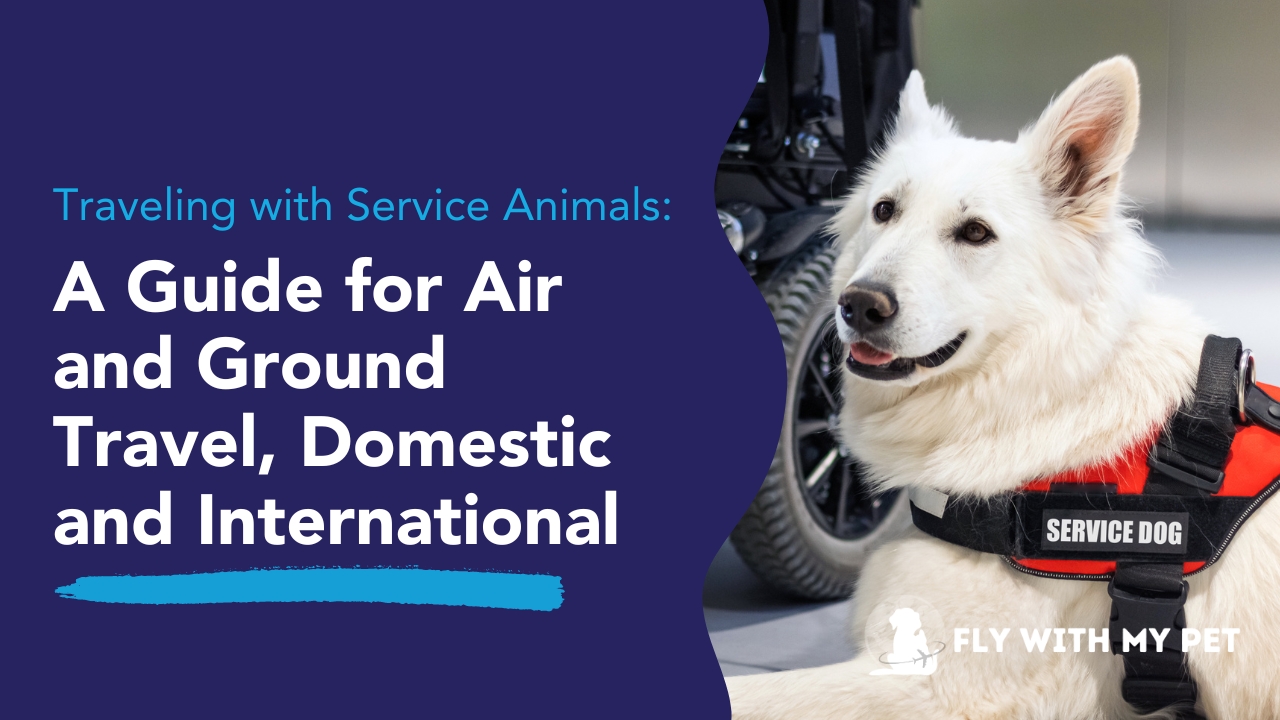
Traveling with your service animal requires thoughtful planning to ensure a smooth journey for both of you. Whether traveling by air or ground, domestically or internationally, it’s crucial to understand the rules, rights, and requirements that apply. In this guide, we’ll explore what you need to know for stress-free travel with your service animal.
Flying with Service Animals
Domestic Air Travel
The US Department of Transportation (DOT) recognizes service animals as animals trained to assist a person with a disability. Under the Air Carrier Access Act (ACAA), service animals can travel with their handlers in the cabin of the aircraft free of charge.
Here are a few steps to make domestic air travel with your service animal easier:
- Notify the Airline in Advance: Airlines generally require notification that you are traveling with a service animal at least 48 hours before departure. Most airlines provide forms that need to be completed regarding the service animal’s training and behavior.
- Documentation: Although airlines cannot require proof of training, they can ask for documentation regarding the animal’s health. Ensure your service animal’s vaccinations are up to date and carry a health certificate if needed.
- Plan for Security Screening: At airport security, you will need to accompany your service animal through the metal detector. Be prepared for TSA officers to inspect any equipment (like a harness) or perform additional screening if necessary.
- Familiarize Your Service Animal with the Airport: Airports can be overwhelming for animals. If possible, try some training sessions at a local airport before your flight to get your service animal comfortable with the environment, including security screening and crowds.
International Air Travel
Traveling internationally adds an additional layer of complexity. Different countries have different regulations for allowing service animals to enter. Here are a few key considerations:
- Research the Destination’s Entry Requirements: Some countries have stringent requirements, including mandatory vaccinations, microchipping, or quarantine periods. Our Pet Travel Asstant can help you navigate these requirements or contact the embassy of your destination country to ensure you meet all necessary requirements.
- Check Airline Policies: Each airline may have its own rules regarding service animals on international flights. Some may require additional documentation or advanced notice.
- Health Certificates and Vaccinations: International travel often requires health certificates, typically signed by a licensed veterinarian within ten days of your departure. Ensure that your service animal is vaccinated in line with the destination’s requirements—rabies vaccinations are often required.
Ground Travel with Service Animals
Traveling by Car
When traveling by car, planning for the comfort and safety of your service animal is paramount. Here are some tips for ensuring a smooth journey:
- Safety First: Use a seatbelt harness or a secure travel crate to keep your service animal safe in the car. This helps protect both you and your animal in case of sudden stops or an accident.
- Frequent Breaks: Plan to take breaks every 2-3 hours for your service animal to stretch, hydrate, and relieve itself. Rest stops and pet-friendly areas are ideal for short walks.
- Pack Essentials: Bring along water, food, waste bags, and comfort items such as a favorite toy or blanket. Make sure your service animal stays hydrated, particularly during long trips.
Traveling by Train or Bus
Policies regarding service animals on trains and buses can vary depending on the company. In the U.S., Amtrak allows service animals to travel with their handlers at no additional cost. It’s best to contact the transportation provider in advance to clarify their policies and ensure a smooth journey.
- Public Transit: Most public transit systems, such as city buses or subways, allow service animals without any special requirements. Make sure your service animal is comfortable with crowds, noise, and staying calm in busy environments.
International Ground Travel
Crossing international borders with a service animal by car or train will require additional preparation:
- Documentation: Make sure to carry your service animal’s vaccination records, health certificates, and any other documentation required by the border authorities of the countries you are entering. Our Pet Travel Asstant can help you navigate these requirements.
- Border Crossing Requirements: Some countries may require specific paperwork or have quarantine requirements. Research these well in advance to avoid any surprises at the border.
General Tips for Traveling with Service Animals
- Understand Your Rights: Service animals have certain rights under the law, but these may vary depending on where you are. For example, in the US, service animals are granted more freedoms compared to emotional support animals. Be sure you understand the specific protections in place in the countries you are traveling through or to.
- Practice Makes Perfect: If your service animal is new to traveling, practice shorter trips to get them accustomed to being in new environments. Take short flights, car rides, or even public transit outings to help reduce anxiety during longer journeys.
- Health and Comfort: Always prioritize your service animal’s health. Schedule a vet checkup before traveling, especially if you’re going internationally. Ensure your service animal is comfortable and well-hydrated throughout the journey.
- Identify Your Service Animal: While airlines and ground transport companies generally respect service animals, it can help to have identification for your animal, such as a vest or ID card, especially when traveling internationally, where policies might differ.
Traveling with a service animal can be a rewarding experience, but it requires planning and attention to detail to ensure a smooth journey. Whether you’re taking to the skies or hitting the road, understanding transportation policies, preparing the right documentation, and prioritizing the comfort and safety of your service animal are key steps for success. Always stay informed about your rights and be prepared to advocate for your service animal when necessary.
By following these guidelines, you can make your travel experience as enjoyable as possible for both you and your service animal—whether your destination is across the country or on the other side of the world.
